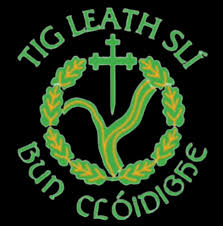
HWH BUNCLODY
GAA CLUB
OFFICIAL WEBSITE

GAA CLUB
OFFICIAL WEBSITE
There has been a GAA club in Bunclody since shortly after the GAA was founded in 1884, operating under various names over the years — Bunclody Insurgents, Slaney Harriers, Mall Rovers, Glasslacken Hurling Club, Half Way House, St Vincent’s, Bunclody, and others.
Bunclody Insurgents won the Junior Football Championship in 1913, and some members of that team went on to assist the Wexford footballers in achieving four All-Ireland wins in a row from 1915 to 1918. We claimed this competition again in 1968 under the Half Way House banner.
A split in the club during the mid-1970s led to the formation of two adult clubs: Bunclody and Half Way House. However, this arrangement was short-lived, as Nicky Rackard brokered a deal that led to the formation of the current club, HWH Bunclody, in 1976. With renewed energy and an endless supply of young footballers — many of whom had achieved success in the Rackard League — there was a growing sense that we were on the brink of a breakthrough.
Gorey were defeated in the Intermediate Football Final of 1976. We reached our first Senior Final in 1977 but fell short, as we did over the next four years in two semi-finals and two finals. We finally claimed the senior football title in 1982, and again in 1985. Our junior teams also had strong performances during this period, winning the Junior B Football title in 1978 and another Junior title in 1986.
At underage level, the club flourished, winning numerous titles at U14, U16, U18, and U21. This trend continued well into the mid-2000s, as shown in our roll of honour.
Football was the dominant sport in the club from the beginning. However, this began to change in the late 1970s and early 1980s, when new teachers and coaches introduced hurling to children at a young age. While hurling always had a presence in the parish, it relied heavily on individual families to keep it alive. With new enthusiasm and better structures, we soon became competitive. In 1978, we won our first hurling title — Junior B. Our first Intermediate title came in 1982, and we competed at Senior level for the next six years. Our underage teams thrived, beginning with the U21s winning in 1988, and enjoyed success at all levels.
Today, we are a true dual club, with equal emphasis on both codes from U6 to Senior, overseen by a strong central committee.
A camogie club was first formed in the mid-1960s but became inactive by the early 1970s. It was reformed in 1982 and took off like a whirlwind. Within a few years, we were winning competitions at both underage and adult levels. Highlights include back-to-back Junior titles in 1993 and 1994, which led to promotion to Senior in 1995. That same year, we were Senior in hurling and football as well — an incredible achievement. We went on to win four Intermediate Camogie Championships and a Senior B title. At underage, championships and leagues have been won at every level — U12, U14, U16, and U18. Our proudest moment came when we won the All-Ireland Féile na nGael in Galway in 1993 — a remarkable achievement for such a young club.
HWH Bunclody Ladies Football Club was formed in 2003, starting with an underage team. By 2024, more underage teams had been added, and a Junior team was formed in 2025, thanks to the involvement of girls from nearby parishes. These teams have been hugely successful, winning numerous championships and leagues. Today, with more clubs entering adult teams, all our adult players are homegrown.
A Place to Play is a recently published book by Humphrey Kelleher highlighting 101 famous GAA grounds around the country. This is a subject many clubs can relate to, as most only secured a permanent home in the past fifty years. Our own story is long and varied, built on the goodwill of local farmers and the community.
In the early years, we played at Humphrey’s in Carrigduff, Kavanaghs of Ballinavocran, and Gaelic Park in Irish Street — which belonged to the parish and was the home of the GAA. Part of that field was sold in the late 1940s to build a school. Robert Hall-Dare then provided a pitch in the Bridge Meadow — a perfectly flat field on the banks of the Slaney that was the envy of many clubs. Sharing it with 40 or 50 ten-hundredweight bullocks in the summertime seemed perfectly normal back then!
We remained there until the early 1970s when the Bridge Meadow was reclaimed for agricultural use, and we had to find a new home. Hanrick’s of Ballinstraw and Kehoe’s of Caimtiauge came to the rescue. Later that decade, we moved to Pat Kavanagh’s in Inch, and in the 1980s, to another Kavanagh field across the road. Our final move was to our own grounds on Church Road, officially opened on 28th April 1985 by Uachtarán Mick Loftus.
As the club grew, and with camogie thriving, a single pitch was no longer enough. In 1996, ten acres were purchased and later developed, with the current layout officially opened by Uachtarán Nicky Brennan on 14th May 2006. Recent additions — including the indoor pavilion, hurling wall, walking track, floodlighting, and spectator stand — have greatly improved the development, participation, and enjoyment of our game.
The Teastas Omóis is the highest honour the club can bestow on an individual. Past winners are: